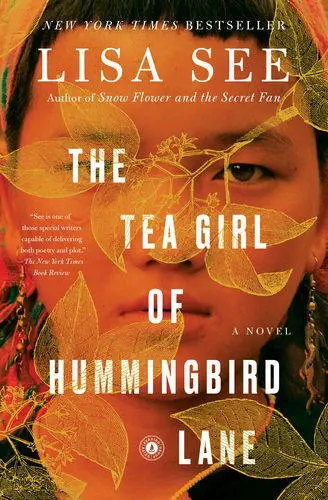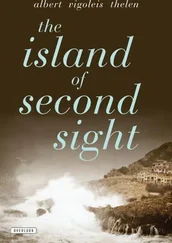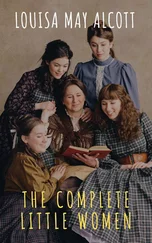10. Confucianism has traditionally played a lesser role on Jeju than elsewhere in Korea, while Shamanism is quite strong. What practical applications did Shamanism have for the haenyeo? Do the traditions and rituals help the haenyeo conquer the fears and anxieties they have about their dangerous work? Does it bring comfort during illness, death, and other tragedies? Does Young-sook ever question her beliefs, and why?
11. On page 39, Young-sook’s mother recites the aphorism If you plant red beans, then you will harvest red beans . Jun-bu repeats the phrase on page 199. How do these two characters interpret the saying? How does this saying play out for various characters?
12. At first it would seem that the visit of the scientists to the island is a digression. What important consequences does the visit have for Young-sook and the other haenyeo?
13. The aphorism “ Deep roots remain tangled underground ,” is used to describe Young-sook’s and Mi-ja’s friendship, and it becomes especially true when it’s revealed that their children, Joon-lee and Yo-chan, are getting married. How else does this aphorism manifest itself on Jeju, especially in the context of the islanders’ suffering and shared trauma? Do you think it’s true that we cannot remove ourselves from the connections of our pasts?
14. On page 120, Young-sook’s mother-in-law, Do-Saeng, says, “There’s modern, and then there’s tradition.” How does daily life on Jeju change between 1938 and 2008? Discuss architecture, the arrival of the scientists and the studies they conduct, the introduction of wet suits and television and other changes. How does Young-sook reconcile her traditional haenyeo way of life with the encroaching modern world? Do you think it’s possible to modernize without sacrificing important traditional values?
15. The characters have lived through Japanese colonialism, the Sino-Japanese War, World War II, the Korean War, the 4.3 Incident, and the Vietnam War. How do these larger historic events affect the characters and island life?
16. Mi-ja’s rubbings are critical to the novel. How do they illustrate the friendship between Mi-ja and Young-sook? How do they help Young-sook in her process of healing?
Enhance Your Book Club and Deepen Your Discussion
1. Consider reading Lisa See’s Snow Flower and the Secret Fan , which follows a lifelong friendship between two women in nineteenth-century China. Compare this friendship to the friendship between Young-sook and Mi-ja.
2. Time yourselves to see how long you can hold your breath. Now think about holding your breath for two minutes.
3. In The Island of Sea Women , there’s an expectation that a daughter should follow in her mother’s footsteps. Did this surprise you? Discuss how common you think it is even today for daughters to follow in their mothers’ footsteps—personally or professionally.
4. If you have access to one, visit your local Korean history or art museum.
5. Visit Lisa’s website website at www.LisaSee.comand Step Inside the World of The Island of Sea Women to see maps, photos, and videos, and to learn about the haenyeo and Lisa’s research.

The Tea Girl of Hummingbird Lane

© PATRICIA WILLIAMS
Lisa See is the New York Times bestselling author of The Tea Girl of Hummingbird Lane , Snow Flower and the Secret Fan , Peony in Love , Shanghai Girls , China Dolls , and Dreams of Joy , which debuted at #1. She is also the author of On Gold Mountain , which tells the story of her Chinese American family’s settlement in Los Angeles. See was the recipient of the Golden Spike Award from the Chinese Historical Society of Southern California and the Historymakers Award from the Chinese American Museum. She was also named National Woman of the Year by the Organization of Chinese American Women.
www.LisaSee.com
Facebook.com/LisaSeeBooks

@Lisa_See

lisasee_writer
MEET THE AUTHORS, WATCH VIDEOS AND MORE AT
SimonandSchuster.com
Authors.SimonandSchuster.com/Lisa-See

https://www.facebook.com/ScribnerBooks

https://www.twitter.com/ScribnerBooks

@ScribnerBooks
The Tea Girl of Hummingbird Lane
China Dolls
Dreams of Joy
Shanghai Girls
Peony in Love
Snow Flower and the Secret Fan
Dragon Bones
The Interior
Flower Net
On Gold Mountain
Thank you for downloading this Simon & Schuster ebook. We hope you enjoyed reading it.
Get a FREE ebook when you join our mailing list. Plus, get updates on new releases, deals, recommended reads, and more from Simon & Schuster. Click below to sign up and see terms and conditions.
CLICK HERE TO SIGN UP
Already a subscriber? Provide your email again so we can register this ebook and send you more of what you like to read. You will continue to receive exclusive offers in your inbox.

Scribner
An Imprint of Simon & Schuster, Inc.
1230 Avenue of the Americas
New York, NY 10020
www.SimonandSchuster.com
This book is a work of fiction. Any references to historical events, real people, or real places are used fictitiously. Other names, characters, places, and events are products of the author’s imagination, and any resemblance to actual events or places or persons, living or dead, is entirely coincidental.
Copyright © 2019 by Lisa See
All rights reserved, including the right to reproduce this book or portions thereof in any form whatsoever. For information, address Scribner Subsidiary Rights Department, 1230 Avenue of the Americas, New York, NY 10020.
First Scribner hardcover edition March 2019
SCRIBNER and design are registered trademarks of The Gale Group, Inc., used under license by Simon & Schuster, Inc., the publisher of this work.
For information about special discounts for bulk purchases, please contact Simon & Schuster Special Sales at 1-866-506-1949 or business@simonandschuster.com.
The Simon & Schuster Speakers Bureau can bring authors to your live event. For more information or to book an event, contact the Simon & Schuster Speakers Bureau at 1-866-248-3049 or visit our website at www.simonspeakers.com.
Jacket design by Olga Grlic and Jaya Miceli
Jacket photograph source: National Archives of Korea
Seaweed artwork by Ievgeniia Lytvynovych/Getty Images
Читать дальше



 @Lisa_See
@Lisa_See lisasee_writer
lisasee_writer https://www.facebook.com/ScribnerBooks
https://www.facebook.com/ScribnerBooks











